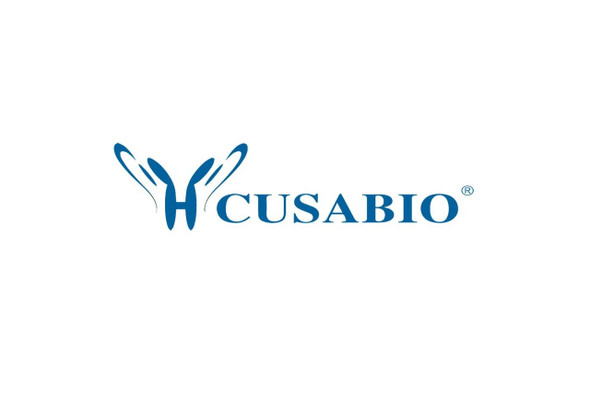Cusabio Human Recombinants
Recombinant Human SWI/SNF-related matrix-associated actin-dependent regulator of chromatin subfamily B member 1 (SMARCB1), partial | CSB-BP623654HU
- SKU:
- CSB-BP623654HU
- Availability:
- 28 - 38 Working Days
Description
Recombinant Human SWI/SNF-related matrix-associated actin-dependent regulator of chromatin subfamily B member 1 (SMARCB1), partial | CSB-BP623654HU | Cusabio
Alternative Name(s): BRG1-associated factor 47 ;BAF47Integrase interactor 1 protein;SNF5 homolog ;hSNF5
Gene Names: SMARCB1
Research Areas: Cell Cycle
Organism: Homo sapiens (Human)
AA Sequence: MMMALSKTFGQKPVKFQLEDDGEFYMIGSEVGNYLRMFRGSLYKRYPSLWRRLATVEERKKIVASSHGKKTKPNTKDHGYTTLATSVTLLKASEVEEILDGNDEKYKAVSISTEPPTYLREQKAKRNSQWVPTLPNSSHHLDAVPCSTTINRNRMGRDKKRTFPLCFDDHDPAVIHENASQPEVLVPIRLDMEIDGQKLRDAFTWNMNEKLMTPEMFSEILCDDLDLNPLTFVPAIASAIRQQIESYPTDSILEDQSDQRVIIKLNIHVGNISLVDQFEWDMSEKENSPEKFALKLCSELGLGGEFVTTIAYSIRGQLSWHQKTYAFSENPLPTVEIAIRNTGDADQWCPLLETLTDAEMEKKIRDQDRNTRRMR
Source: Baculovirus
Tag Info: N-terminal 6xHis-tagged
Expression Region: 2-376aa
Sequence Info: Partial
MW: 45 kDa
Purity: Greater than 90% as determined by SDS-PAGE.
Relevance: Core component of the BAF (hSWI/SNF) complex. This ATP-dependent chromatin-rodeling complex plays important roles in cell proliferation and differentiation, in cellular antiviral activities and inhibition of tumor formation. The BAF complex is able to create a stable, altered form of chromatin that constrains fewer negative supercoils than normal. This change in supercoiling would be due to the conversion of up to one-half of the nucleosomes on polynucleosomal arrays into asymmetric structures, termed altosomes, each composed of 2 histones octamers. Stimulates in vitro the rodeling activity of SMARCA4/BRG1/BAF190A. Involved in activation of CSF1 promoter. Belongs to the neural progenitors-specific chromatin rodeling complex (npBAF complex) and the neuron-specific chromatin rodeling complex (nBAF complex). During neural development a switch from a st/progenitor to a post-mitotic chromatin rodeling mechanism occurs as neurons exit the cell cycle and become committed to their adult state. The transition from proliferating neural st/progenitor cells to post-mitotic neurons requires a switch in subunit composition of the npBAF and nBAF complexes. As neural progenitors exit mitosis and differentiate into neurons, npBAF complexes which contain ACTL6A/BAF53A and PHF10/BAF45A, are exchanged for homologous alternative ACTL6B/BAF53B and DPF1/BAF45B or DPF3/BAF45C subunits in neuron-specific complexes (nBAF). The npBAF complex is essential for the self-renewal/proliferative capacity of the multipotent neural st cells. The nBAF complex along with CREST plays a role regulating the activity of genes essential for dendrite growth . Plays a key role in cell-cycle control and causes cell cycle arrest in G0/G1.
Reference: Mutations affecting components of the SWI/SNF complex cause Coffin-Siris syndrome.Tsurusaki Y., Okamoto N., Ohashi H., Kosho T., Imai Y., Hibi-Ko Y., Kaname T., Naritomi K., Kawame H., Wakui K., Fukushima Y., Homma T., Kato M., Hiraki Y., Yamagata T., Yano S., Mizuno S., Sakazume S. , Ishii T., Nagai T., Shiina M., Ogata K., Ohta T., Niikawa N., Miyatake S., Okada I., Mizuguchi T., Doi H., Saitsu H., Miyake N., Matsumoto N.Nat. Genet. 44:376-378(2012)
Storage: The shelf life is related to many factors, storage state, buffer ingredients, storage temperature and the stability of the protein itself. Generally, the shelf life of liquid form is 6 months at -20?/-80?. The shelf life of lyophilized form is 12 months at -20?/-80?.
Notes: Repeated freezing and thawing is not recommended. Store working aliquots at 4? for up to one week.
Function: Core component of the BAF (hSWI/SNF) complex. This ATP-dependent chromatin-remodeling complex plays important roles in cell proliferation and differentiation, in cellular antiviral activities and inhibition of tumor formation. The BAF complex is able to create a stable, altered form of chromatin that constrains fewer negative supercoils than normal. This change in supercoiling would be due to the conversion of up to one-half of the nucleosomes on polynucleosomal arrays into asymmetric structures, termed altosomes, each composed of 2 histones octamers. Stimulates in vitro the remodeling activity of SMARCA4/BRG1/BAF190A. Involved in activation of CSF1 promoter. Belongs to the neural progenitors-specific chromatin remodeling complex (npBAF complex) and the neuron-specific chromatin remodeling complex (nBAF complex). During neural development a switch from a stem/progenitor to a postmitotic chromatin remodeling mechanism occurs as neurons exit the cell cycle and become committed to their adult state. The transition from proliferating neural stem/progenitor cells to postmitotic neurons requires a switch in subunit composition of the npBAF and nBAF complexes. As neural progenitors exit mitosis and differentiate into neurons, npBAF complexes which contain ACTL6A/BAF53A and PHF10/BAF45A, are exchanged for homologous alternative ACTL6B/BAF53B and DPF1/BAF45B or DPF3/BAF45C subunits in neuron-specific complexes (nBAF). The npBAF complex is essential for the self-renewal/proliferative capacity of the multipotent neural stem cells. The nBAF complex along with CREST plays a role regulating the activity of genes essential for dendrite growth (By similarity). Plays a key role in cell-cycle control and causes cell cycle arrest in G0/G1.
Involvement in disease: Rhabdoid tumor predisposition syndrome 1 (RTPS1); Schwannomatosis 1 (SWNTS1); Coffin-Siris syndrome 3 (CSS3)
Subcellular Location: Nucleus
Protein Families: SNF5 family
Tissue Specificity:
Paythway:
Form: Liquid or Lyophilized powder
Buffer: If the delivery form is liquid, the default storage buffer is Tris/PBS-based buffer, 5%-50% glycerol. If the delivery form is lyophilized powder, the buffer before lyophilization is Tris/PBS-based buffer, 6% Trehalose, pH 8.0.
Reconstitution: We recommend that this vial be briefly centrifuged prior to opening to bring the contents to the bottom. Please reconstitute protein in deionized sterile water to a concentration of 0.1-1.0 mg/mL.We recommend to add 5-50% of glycerol (final concentration) and aliquot for long-term storage at -20?/-80?. Our default final concentration of glycerol is 50%. Customers could use it as reference.
Uniprot ID: Q12824
HGNC Database Link: HGNC
UniGene Database Link: UniGene
KEGG Database Link: KEGG
STRING Database Link: STRING
OMIM Database Link: OMIM









